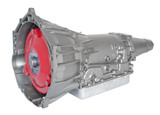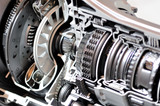What Is a Lockup Torque Converter?
Have you ever wondered what a lockup torque converter, or when should a torque converter lockup? If you have, then let's explain each of these to you, and generally, all you need to know about a torque converter. But first off, you already get the picture that this is a major component in your car. And that being so, its function aid the car's performance.
Understanding Torque Converters
A torque converter is a coupling that sends rotating power to a rotating driven load. This power moves from the prime mover such as an internal combustion engine before it gets to the load. It can, therefore, be said that the torque converter creates a connection between the power source and the load in an automatic transmission.
This component is also connected to the flexplate directly, and the latter connects directly to the crankshaft. A torque converter has the major characteristic of multiplying torque if the output rotational speed is low. And this multiplication enables the fluid from the turbine's curved vanes to deflect off the stator.
The early designs of the torque converter caused an RPM slippage of fluid between its turbine and impeller. When that happens, there is often a disturbance in the oil and this turbulence leads to the generation of heat. Automakers began to use air vanes positioned outside the torque converter in a bid to reduce the heat and cool the oil.
Nonetheless, this structure was used in small vehicles and it showed very little success. The oil was moved through the transmission cooler just to reduce the heat, but at the expense of energy and fuel being wasted.
What Is a Lockup Torque Converter?
Lockup torque converters are a type of converter that has a clutch. The engagement of this clutch causes the engine to lock to the transmission input shaft thereby leading to a direct 1:1 drive ratio. A lockup torque converter is used since it offers fuel economy, enabling you to use fuel minimally while on that joy ride.
History of Lockup Converters
Lockup torque converters gained popularity when it was discovered that manual transmissions are more fuel-efficient than automatic transmissions. The old torque converters also led to a loss in RPM between the gearbox's crankshaft and input shaft. For this reason, it earned automatics the name slushbox at the time.
On the other hand, car manufacturers had to meet fuel economy targets set by the government. Accordingly, automatic transmissions were made to have an overdrive which helps to improve fuel economy. And this overdrive enabled the engine to turn while in lower RPM as the vehicle accelerates at a fast speed.
While this was an advantage, it wasn't all so rosy when the engine turned slowly given that there was a slippage of the torque converter. As the torque converter slipped, it generated heat, which could potentially affect the converter and transmission negatively.
This heat also impacted on fuel economy, thereby overriding the purpose the overdrive was used in the first place. Accordingly, a lock-up of the converter helped to curb this slippage, and at the same time reduce heat and improve fuel economy.
Stages of Operation
The operation of the lockup converter is a bit complicated but one can still gain an understanding of it. In this case, there is a lock of the turbine to the torque converter's case by the hydraulic pressure and this occurs when the crankshaft and input shaft are to turn at the same time while driving.
The engagement of the lockup clutch causes the fluid in the converter to rotate and at a speed similar to other components of the converter. The good thing is, heat is curbed significantly and so is the oil turbulence. The movement of the fluid can be attributed to the circulation which cycles the fluid through the cooler.
Furthermore, the lock-up mechanism takes advantage of a frictional clutch which is managed by a hydraulic pressure circuit. The engagement of the mechanism causes the components of the torque converter to serve as a rotating flywheel mass. As a result, this helps to reduce the load on the radiator while promoting fuel economy.
Lockup Torque Converter Failures
A torque converter lockup clutch may fail and there are different ways this failure can occur. For instance, this component can remain locked up, and as such, it causes the engine to stall as the car is braked. Another way it can fail is if the component does not lock and that results in increased fuel consumption as well as radiator temperature.
Finally, the converter can tend to slip when it is engaged, thereby allowing the engine speed to increase at a constant speed. It is worth noting that a torque converter may not lockup for the following reasons:
-
- A cold engine temperature: There are cases where the converter may not lockup except the coolant temperature reaches 120°F.
- Lockout of the overdrive unit: An overdrive unit that is locked-up causes the torque converter lockup to also be locked out.
Signs of a Failing Torque Converter
There are times when your lockup clutch will not engage, and you can easily spot out when that happens. To this, you need to pay attention to the transmission shift timing and quality. You can also use an auxiliary tachometer since there are cases where the lockup clutch engagement may be gentle with a minor change of engine speed.
On the other hand, torque converters will tend to unlock from the application of the brake or at the release of the throttle. The disengagement of the clutch may be easier to spot out compared to the engagement, given that it occurs gradually in some cars.
The Bottom Line
A lockup torque converter is important in automatic transmissions to reduce slippage. And once slippage is curbed, heat generation is minimal while fuel economy is improved. This and many more have been outlined above to give you an insight into this component and why you may need one.




